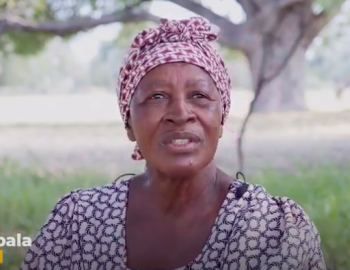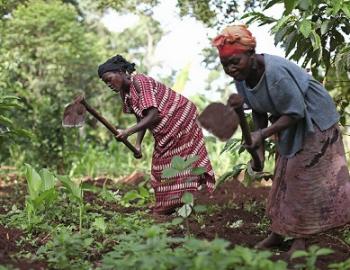INSIDE STORY: Climate-smart agriculture - Learning from three agro-ecological regions of Nepal
INSIDE STORY: Climate-smart agriculture - Learning from three agro-ecological regions of Nepal
Nepal’s agriculture sector, which accounts for around three-quarters of employment and one-quarter of the country’s gross domestic product, is strongly affected by current climate variability, uncertainty and extremes. Many farmers operate at small scales, with 26.69% having less than 0.2 hectares (ha) and 47.31% with less than 0.5 ha. Large numbers of these farmers are already poor and extremely vulnerable to climate change. The impacts on agriculture are more pronounced among women and smallholders, who have poor access to natural resources and public services, and limited livelihood options. Such producers are highly exposed and sensitive to climatic threats, such as droughts, floods, soil erosion, landslides, pest outbreaks, and heat and cold waves.
Funded by the Climate and Development Knowledge Network (CDKN), the ‘Scaling-up of climate-smart agriculture in Nepal’ project seeks to increase the resilience of farming communities in varying agro-ecosystems, by promoting climate-smart agricultural technologies and practices. The project aims to develop portfolios of ‘champion’ climate-smart agriculture initiatives, assessing challenges, strategies and key enabling factors for scaling out this approach in the process.
This new 'Inside Story on Climate Compatible Development' describes the projects accomplishments, including how it has nurtured uptake of more sustainable behaviours among diverse social groups. The story explores the lessons that other climate-smart agriculture projects could adopt from this Nepali experience.
Lessons include:
- There is an urgent need for climate-smart agriculture in Nepal, given that the impacts of unpredictable weather patterns are already making themselves felt.
- Climate-smart agricultural interventions should be designed using socially disaggregated vulnerability
assessments, which articulate the local context and climate risks. - Communities are more likely to accept climate-smart agriculture technologies that have multiple benefits and fit well in their integrated system of agriculture.
- Targeting and building the capacity of existing agricultural development institutions facilitates the implementation of climate-smart agriculture programmes.
- Climate-smart agriculture has a better chance of success when different stakeholders match and apply leverage to share and obtain each other’s resources. These can include the private sector, government extension offices and non-governmental organisations.
- Implementation of climate-smart agriculture becomes more effective if technologies are piloted and promoted in a package or portfolio of measures. This yields better results than in isolation, and also helps to sustain outcomes.
Image: agriculture in Nepal, courtesy Mountain Partnership.



